Linux System Administration is a comprehensive hands-on course that teaches students how to install, configure and maintain an Enterprise Linux system in a networked environment.
This lab-intensive class explores core administrative tasks such as: creating and managing users, creating and maintaining file systems, determining and implementing security measures and performing software installation and package management. Linux networking topics include installing and supporting SSH, NFS, Samba and the Apache Web server. Students will explore common security issues, as well as several tools, such as the PAM modules that help secure the operating system and network environment. Upon successful completion of this course, students will be prepared to maintain Linux systems in a networked business environment.
Although the course includes installing and configuring a CentOS 7 / RHEL 7 Linux system, much of the course content also applies to Oracle, Ubuntu, Scientific and other current versions of mainstream Linux distributions. Labs include user and group maintenance, system backups and restoration, software management, administration tasks automation, file system creation and maintenance, managing remote access, working with cron, and configuring basic file sharing and Web services, as well as working with system logging utilities such as rsyslog and much more.
Learning Objectives
This course is about 50% lab to lecture ratio, combining expert instructor-led discussions with practical hands-on skills that emphasize current techniques, best practices and standards. Working in this hands-on lab environment, guided by our expert practitioner, attendees will explore:
Need different skills or topics? If your team requires different topics or tools, additional skills or custom approach, this course may be further adjusted to accommodate. We offer additional Unix, Linux, Scripting, administration, networking, programming, database and other related courses which may be blended with this course for a track that best suits your learning objectives.
This course is about 50% lab to lecture ratio, combining expert instructor-led discussions with practical hands-on skills that emphasize current techniques, best practices and standards. Working in this hands-on lab environment, guided by our expert practitioner, attendees will explore:
Need different skills or topics? If your team requires different topics or tools, additional skills or custom approach, this course may be further adjusted to accommodate. We offer additional Unix, Linux, Scripting, administration, networking, programming, database and other related courses which may be blended with this course for a track that best suits your learning objectives.
This is an introductory-level systems administration course geared for Systems Administrators and users who wish to learn how to how to install, configure and maintain an Enterprise Linux system in a networked environment. Attendees should have incoming experience with common UNIX/Linux user-level commands, such as moving, copying and editing files. Experience with the vi editor is a plus
Please see the Related Courses tab for specific Pre-Requisite courses, Related Courses that offer similar skills or topics, and next-step Learning Path recommendations.
Please note that this list of topics is based on our standard course offering, evolved from typical industry uses and trends. We will work with you to tune this course and level of coverage to target the skills you need most.
Student Materials: Each participant will receive a digital Student Guide and/or Course Notes, code samples, software tutorials, step-by-step written lab instructions (as applicable), diagrams and related reference materials and resource links. Students will also receive the project files (or code, if applicable) and solutions required for the hands-on work.
Hands-On Setup Made Simple! Our dedicated tech team will work with you to ensure our ‘easy-access’ cloud-based course environment, or local installation, is accessible, fully-tested and verified as ready to go well in advance of the course start date, ensuring a smooth start to class and effective learning experience for all participants. In some cases we can also help you install this course locally if preferred. Please inquire for details and options.
Every-Course Extras = High-Value & Long-Term Learning Support! All Public Schedule courses include our unique EveryCourse Extras package (Course Recordings, Live Instructor Follow-on Support, Free *Live* Course Refresh Re-Takes, early access to Special Offers, Free Courses & more). Please inquire for details.
Live scheduled classes are listed below or browse our full course catalog anytime
Check out custom training solutions planned around your unique needs and skills.
Exclusive materials, ongoing support and a free live course refresh with every class.
Please see the current upcoming available open enrollment course dates posted below. Please feel free to Register Online below, or call 844-475-4559 toll free to connect with our Registrar for assistance. If you need additional date options, please contact us for scheduling.
| Course Title | Days | Date | Time | Price | |
|---|---|---|---|---|---|
| Introduction to Linux Systems Administration (TTLX2220) | 5 Days | Jun 17 to Jun 21 | 10:00 AM to 06:00 PM EST | $2,595.00 | Enroll |
| Introduction to Linux Systems Administration (TTLX2220) | 5 Days | Aug 19 to Aug 23 | 10:00 AM to 06:00 PM EST | $2,595.00 | Enroll |
| Introduction to Linux Systems Administration (TTLX2220) | 5 Days | Sep 23 to Sep 27 | 10:00 AM to 06:00 PM EST | $2,595.00 | Enroll |
| Introduction to Linux Systems Administration (TTLX2220) | 5 Days | Oct 28 to Nov 1 | 10:00 AM to 06:00 PM EST | $2,595.00 | Enroll |
| Introduction to Linux Systems Administration (TTLX2220) | 5 Days | Dec 9 to Dec 13 | 10:00 AM to 06:00 PM EST | $2,595.00 | Enroll |

Mix, Match & Master!
2FOR1: Two Courses, One Price!
Enroll in *any* two public courses (for 2023 *OR* 2024 dates!) by December 31, for one price! Learn something new, or share the promo!
Special Offers
Limited Offer for most courses.
SAVE 50%